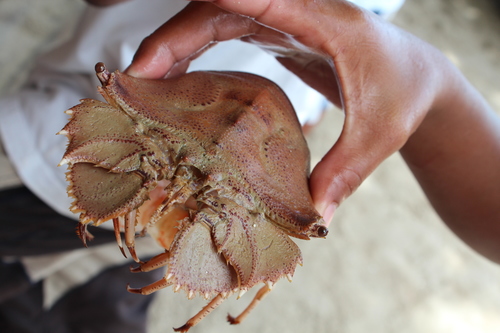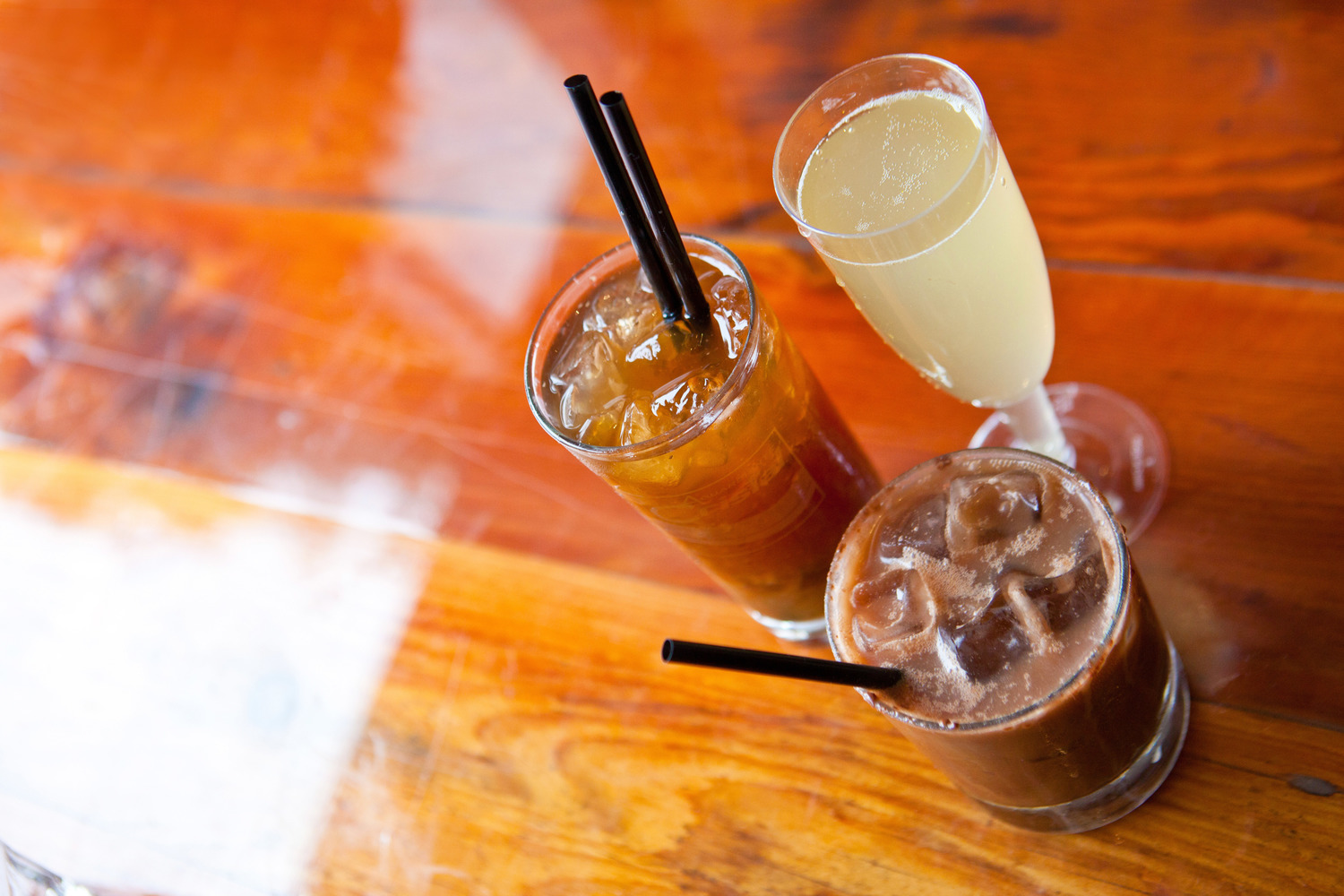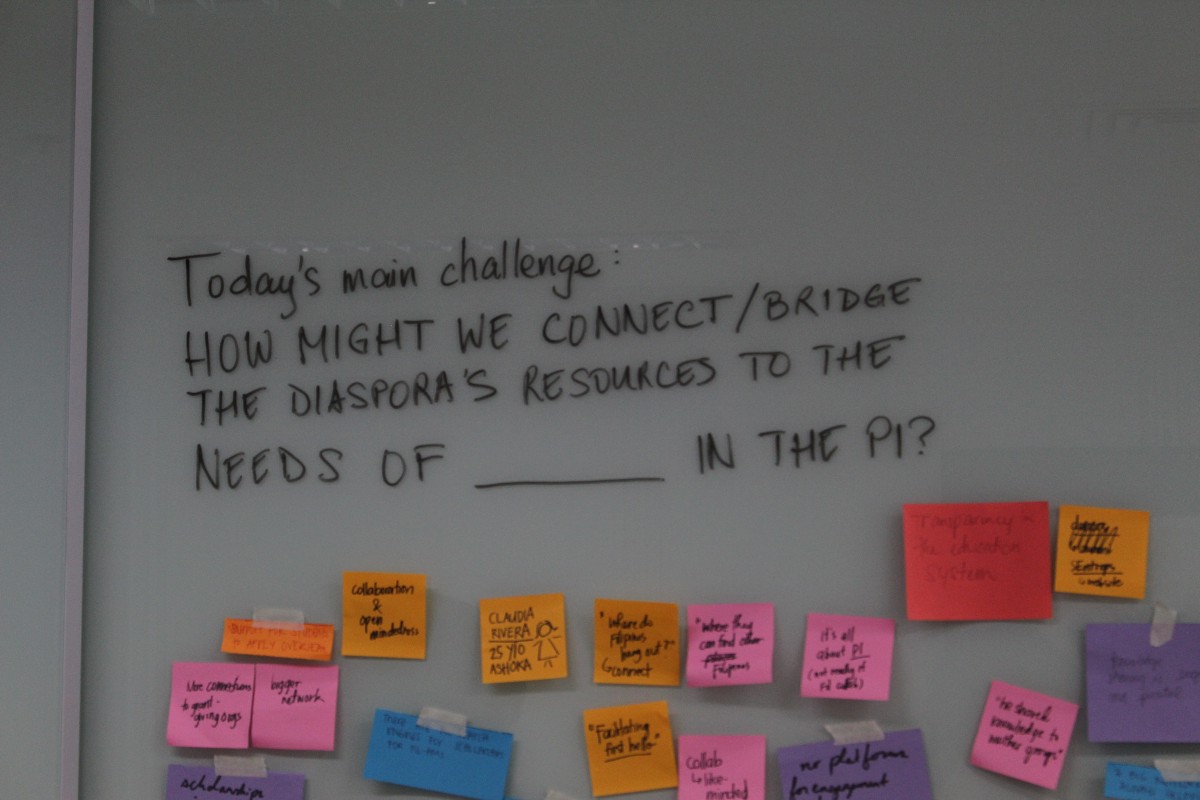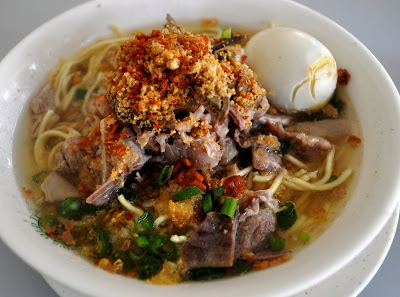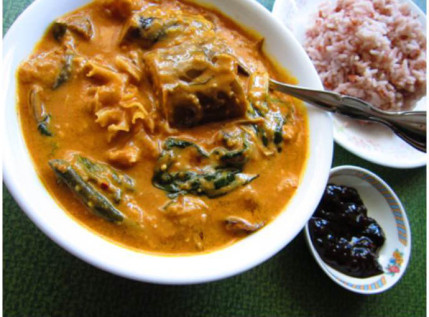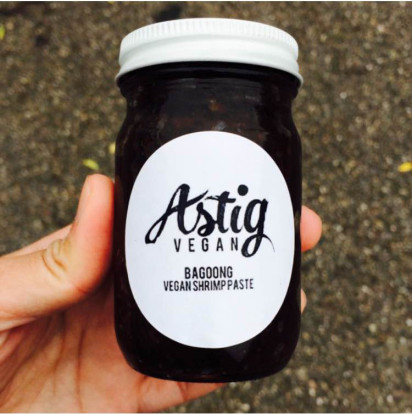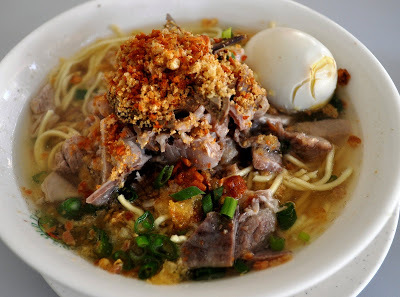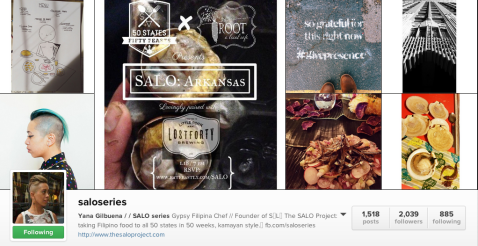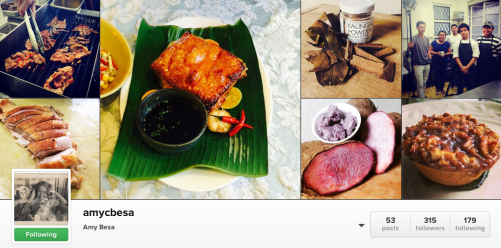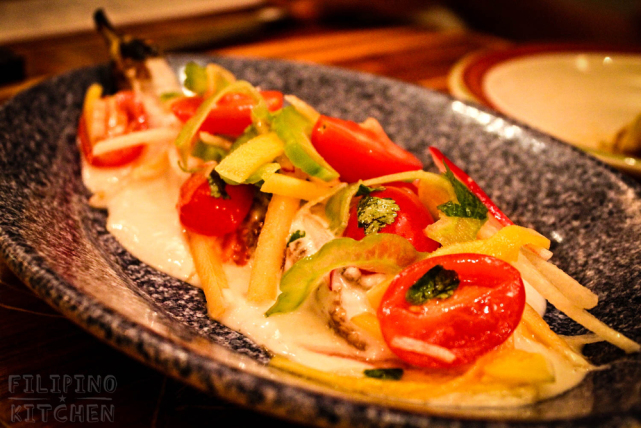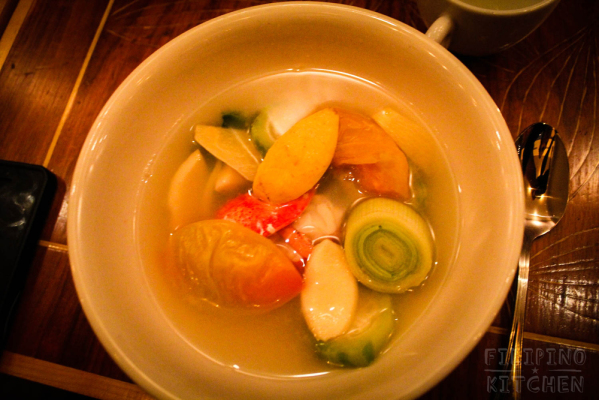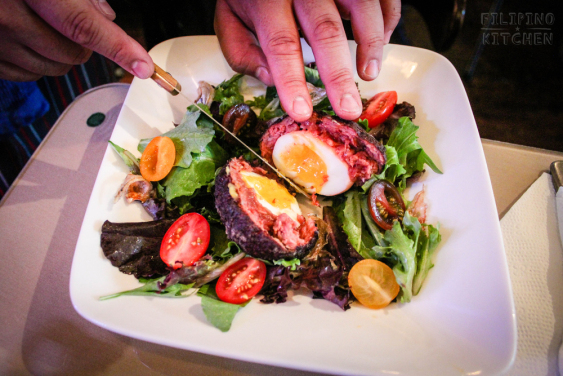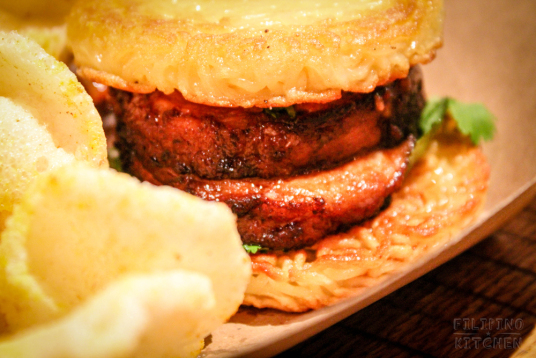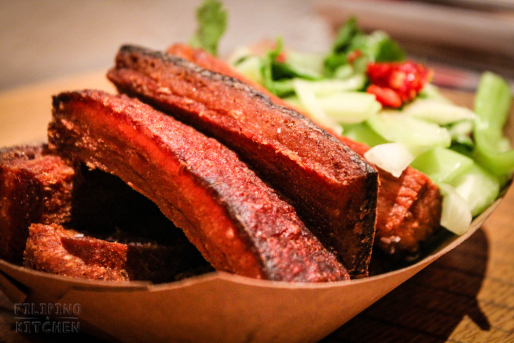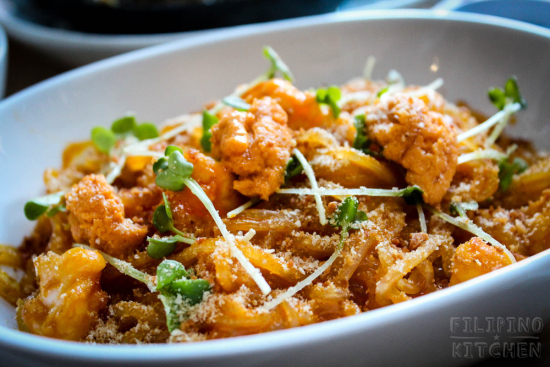Lobster-Silog? Tender, sweet lobster, with a side of sinangag or garlic fried rice and an egg cooked to order sounds like a localized, Filipino-fantastic way to start a Sunday in Boston, a city well known for its crustacean bounty.
Even as the enterprising collective of Filipino Kitchen, Errant Diner and UniPro -- or #FKEDUP as we playfully refer to ourselves on social media -- will travel to Boston for the annual East Coast Asian American Students Union (ECAASU) conference at Harvard University next weekend, we never intended to throw a pop-up dinner (or brunch, as it were) so early in our collaboration. We never ruled it out, either.
UniPro executive board vice-president Noel Aglubat told me, “Although we are not even at the midpoint of the collaboration, we have gone beyond cross-blog content and posts. We are right in the thick of planning our Boston brunch pop-up, and it’s super exciting.”
Added our own Chef AC Boral, “It is a unique and powerful thing to see Filipinos united together to advance the discussion about our identities and who we are, as well as showcasing pride for it.”
EATING THE CRAB MENTALITY
An oft-cited criticism of Philippine society is crab mentality: crabs trying to escape from a bucket pull each other down. It's regarded as a selfish, self-hatred that results in personal failure and mediocrity across the board. Writes Antonio Contreras on the GMA News Opinion blog last year, "Pinoy elites and the fallacy of the crab mentality":
One of the elitist ways by which we dismiss and demean the ordinary and the lowly classes is to accuse the non-elites who rant against the elites as guilty of crab mentality. Having an “isip talangka” is a derisive and critical commentary on how ordinary Pinoys behave in relation to upward mobility. In the world of the “talangka,” the crabs that dwell below would pull down those at the top, the upwardly mobile and those who have the ability to climb up the social ladder—that is, the elites and the rising neo-elites.

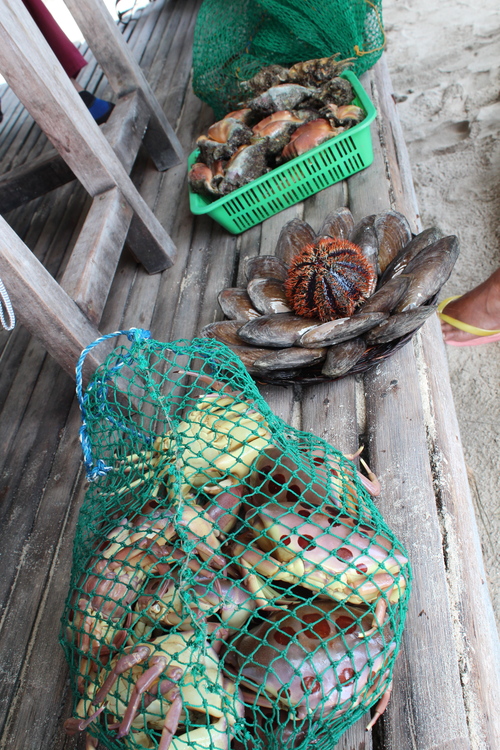
THE MENTALITY I'VE OBSERVED IN THE #FKEDUP COLLABORATION THAT WE HAVE WHEN IT COMES TO CRABS (AND LOBSTERS, TOO) IS HOW TO COOK THEM AND WHERE WE CAN EAT THEM. BECAUSE SUCCESS CAN BE MUTUAL, WHEN YOU SUPPORT EACH OTHER'S GOALS AND COMMUNICATE WELL.
For the past eight weeks, we’ve been building a partnership from a group of seven individuals, across four states and three time zones with a single mission: expand the conversation about Filipino food, and by extension, Filipino culture. We planned, wrote, co-edited, and cross-posted articles centering on Filipino cuisine and culture: our memorable dishes from last year, our un-trendy predictions for the year-to-come and a pun-derful piece about bangus, “My Milkfish Brings all the Girls to the Yard.”
“I love this blog-based collaboration,” said Aglubat. “It’s something I’ve never done before and to my knowledge, it’s something UniPro has never done before. The latter is a bit shocking since collaboration is the essence of UniPro.”
UniPro, shorthand for Pilipino American Unity for Progress, is a New York City-based, national nonprofit organization whose end goal is a unified and engaged Pilipino America. Though UniPro chapters share the unity mission, how that looks means different things in different cities and regions of the country. Aglubat explained that local community leaders and organizations are consulted on whether a new UniPro local chapter would be a useful and welcome resource. When need and purpose are established, local UniPro chapter members have the freedom to build the organization to address local and specific issues.
In early November, we met several of the UniPro members when they were passing through Chicago for the annual Filipino Americans Coming Together (FACT) conference at the University of Illinois at Urbana-Champaign. A brief meeting in a loud beercade devoted to 80s and 90s glory days was the beginning of a beautiful friendship. “When I first approached Sarah and Natalia with the idea of collaboration I did it with three goals in mind; reinvigorating UniPro's blog, pushing forward the Filipino food movement and strengthening our ties to the Fil-Am community in the Midwest,” noted Aglubat. (See postscript on a potential Chicago UniPro.) Even as the blog collaboration stretches UniPro in a new way, so too, does the pop-up restaurant. “We've never done a pop-up restaurant before,” Stephanie Chrispin, UniPro’s director of fundraising, said. “The majority of our collaborations fall under our education or advocacy missions -- related to policy, e.g. the DACA [Deferred Action for Childhood Arrivals] workshops we did with FALDEF [Filipino American Legal Defense & Education Fund] to help sign up undocumented Pinoys and help them determine their eligibility.” “I would say this [effort] is an educational one in that it seeks to expand Filipino cuisine to nontraditional audiences,” continued Chrispin.
FREE YOUR MIND AND THE REST WILL FOLLOW
In late November, while on his last tour stop in Chicago with Wiz Khalifa, my longtime friend and fellow Pitt alumni, Brandon Glova, better known as DJ Bonicsto you hip hop aficionados, asked me if I wanted to try and speak together at the ECAASU conference. It was never a question, however, because my answer was always yes.
Pitt ASA forever @djbonics it's awesome to build w you brother & witness you & @wizkhalifa doin it #Chicago #friends #MIA A photo posted by Sarahlynn Pablo (@sarahlynneats) on
The Blacc Hollywood Tour continues as we finish a 2 nights at Webster Hall in NYC. On the second night Busta Rhymes affiliated rapper O.T. Genasis turn it out with his performance of "COCO." At the end of the video you see Busta get a little emotional on stage with Wiz!
After all, in my undergraduate days, the ECAASU conference was where I learned to say and give names to what I long felt as an Asian American. I remember sitting in an auditorium with probably a thousand kids like me. I’d never seen so many me’s in one place. I remember my tears when Chicago-based Asian American spoken word quartet, I Was Born With Two Tongues (yes, that's a MySpace page), reflected our experience with visceral art. I remember going to the conference with my betters at Pitt, led by upperclassmen ates (older sister) and kuyas (older brother), and then in short time, becoming that ate to a group of young bloods. That conference was one of many beginnings that lead me to Filipino Kitchen.
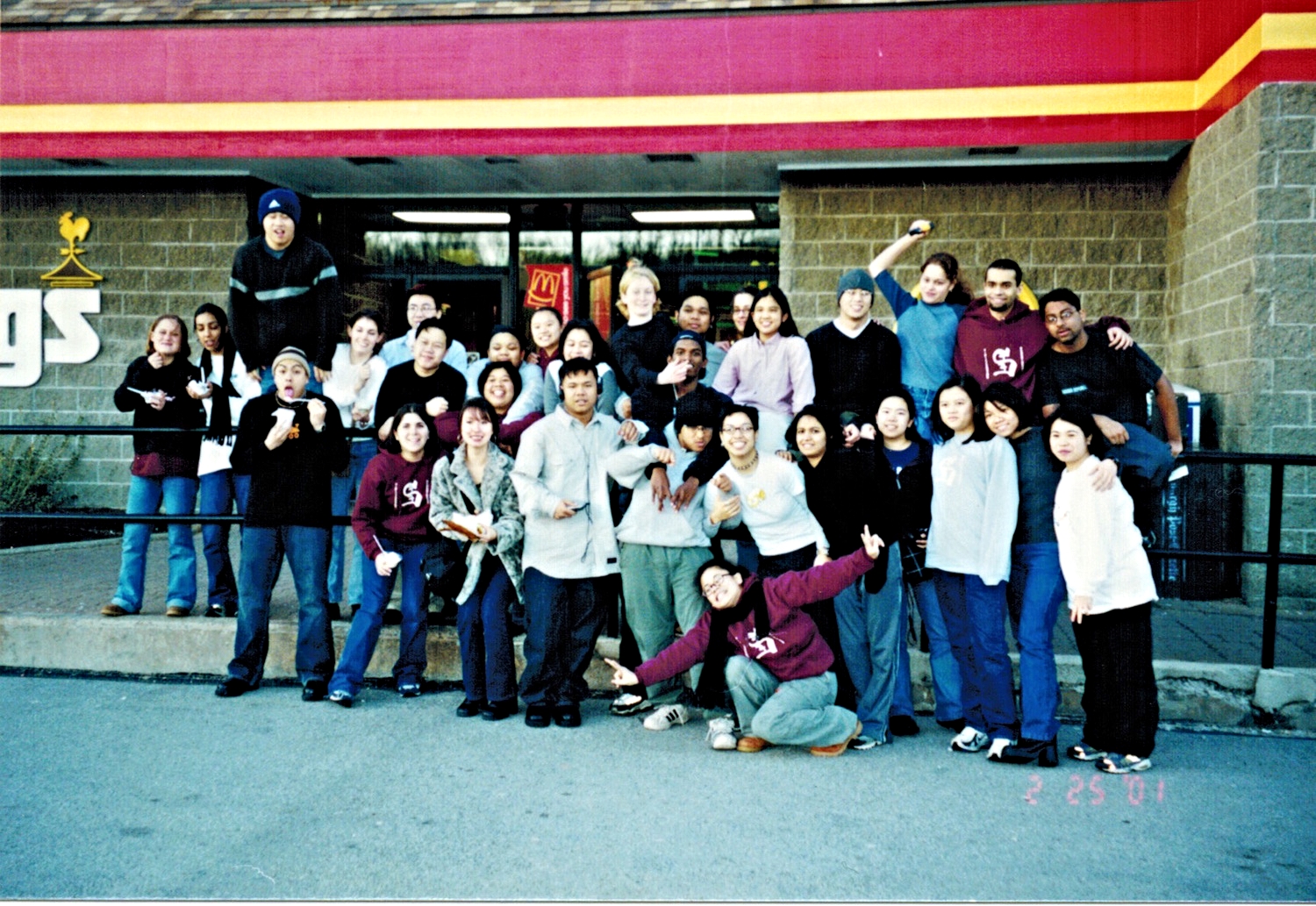

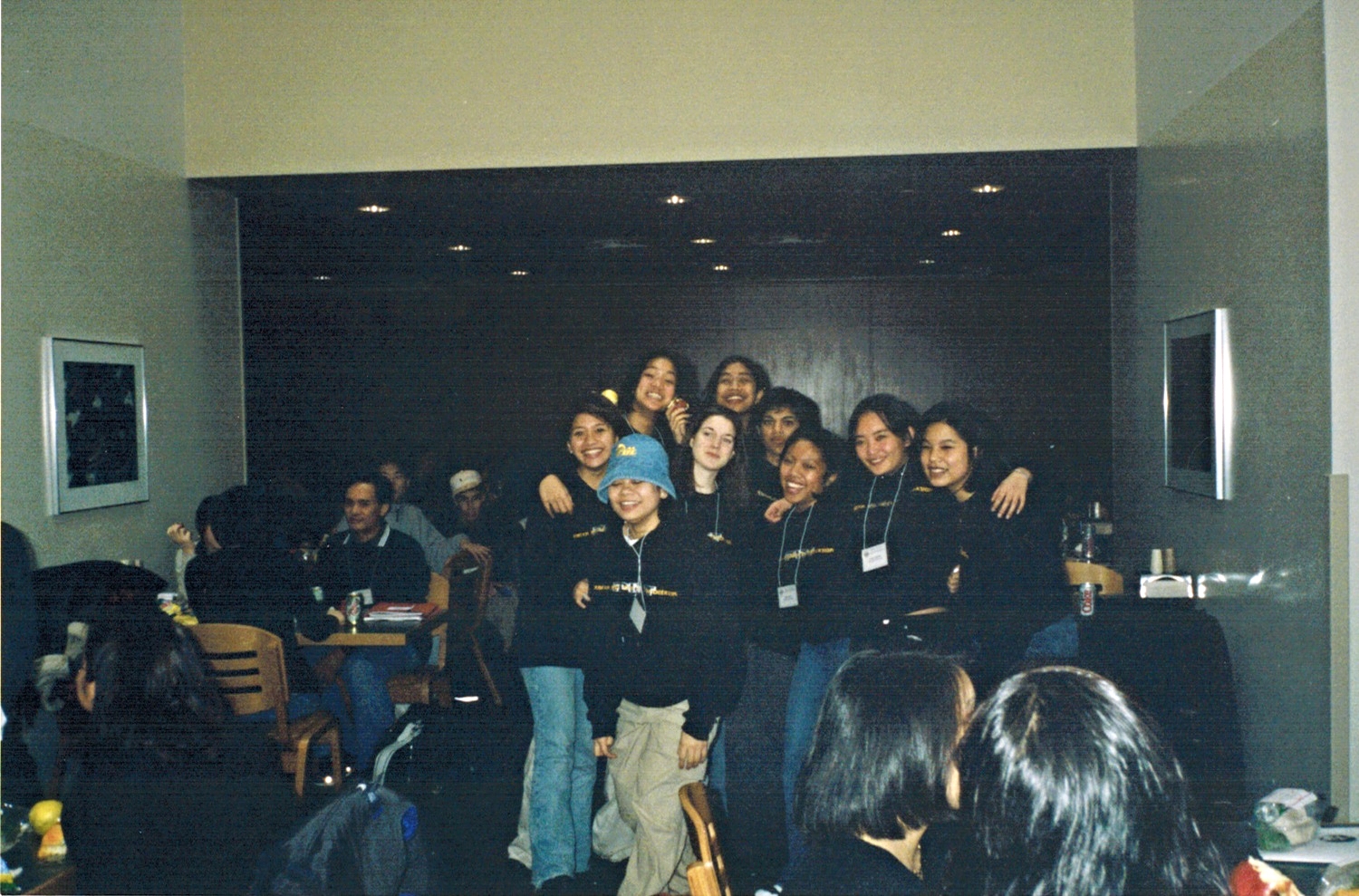

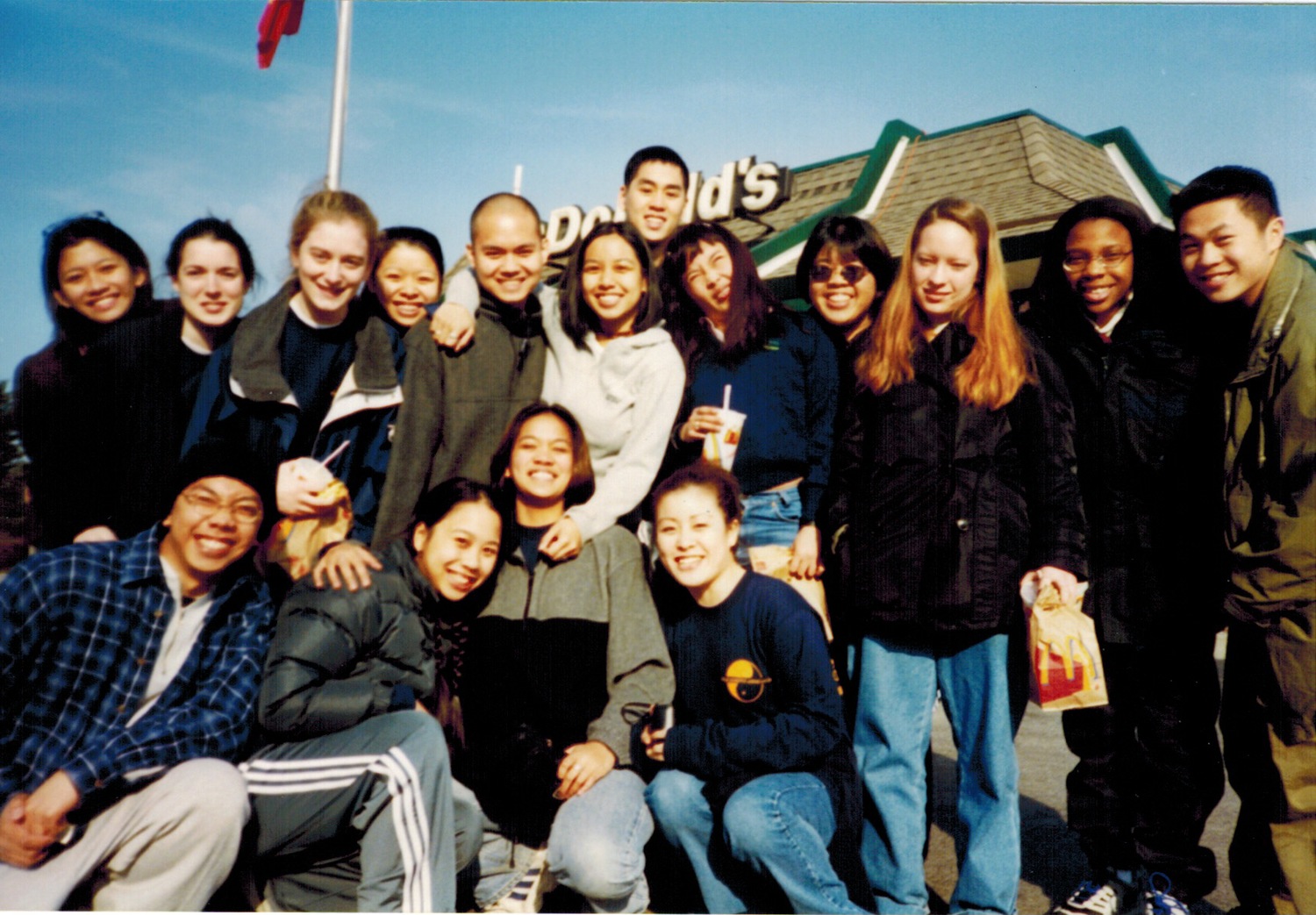

To think of the possibility of giving back at ECAASU felt like coming home. A right idea at the right time.
Our workshop, “Not Enough,” looks at what can often feel like the conflicted space that Asian Americans exist in -- one that is not American enough to peers and greater society, and one that is not Asian enough for family elders or relatives in the motherland. Just as much, if not more, than twenty years ago, Asian Americans need to own our histories and to understand our identities as a source of power, not exile.
“What we are doing [in Boston] is bigger than we are. It is very refreshing to realize that we are part of something bigger than what Filipino Kitchen is,” said photographer Natalia Roxas-Alvarez of Filipino Kitchen. “It's beyond the blog, it's beyond the pop-ups. It's really embracing being cultural ambassadors.”
“Boston will be a great stepping stone,” said Boral. “It's our way of showing people that we mean business, and we're going to do business by talking about who we are, as well as feeding you amazing, delicious food.”
“We hope to inspire a whole new batch of kids,” added Roxas-Alvarez of the college ‘kid’ participants of the conference. “It is a different feeling from when I used to [present at conferences] six and seven years ago. And plus… THIS IS HARVARD.”
KITCHEN CONFIDENTIAL
After Saturday's feeding of the mind at ECAASU comes Sunday's feeding of the body and soul. Chef AC Boral will cook alongside Paolo Espanola from The Errant Diner.
Espanola’s diverse, diasporic range of experience with food and places isn’t atypical for Filipinos: a childhood in Saudi Arabia, teen years in a seminary in rural Wisconsin, his collegiate tribulations in Minnesota, and now in the concrete jungle of New York City. In his own right, a self-described pop-up dinner n00b, caterer and blogger, Espanola told me about his motivations in participating in this venture.
“For me I wanted to show that food can and should be cooked by everybody and anybody because it’s what tells our stories, keeps us together,” said Espanola, who is also on the UniPro staff. “It’s one of the few languages that doesn't need to be spoken. I swear we could solve a ton of our world problems if we just found the time and courage to share a meal.”
As for the menu itself, the brunch will be a Boston reprise of the wildly popular, not-your-Nanay’s Filipino American breakfast franchise, Rice & Shine. “This Rice & Shine menu takes a kind of back to basics approach to what Filipino food can be,” said Boral. “It will be focused on the staple breakfast food group, "silogs," meaning [a breakfast meat] served with garlic fried rice and fried egg. Our silogs will still stray a bit from tradition as we bring some Boston-inspired components to our dishes.”
“There will still be some Rice & Shine favorites but I'm excited to have curated a new menu for Boston along with our partners in the #FKEDUP collaboration,” added Boral.
Natalia and I will be joined by Aglubat and Chrispin of UniPro to serve our Boston guests a dose of Filipino American culture and history with the delicious brunches.
Aglubat added, “The big takeaway I want our audiences to see from this collaboration is how collaboration and working together can increase the visibility of the Filipino American. Oh, and of course, how delicious, diverse and dope Filipino Food is.”
POSTSCRIPT: Exploratory talks have begun among a few young professional Pinoy organizers to start a UniPro chapter in Chicago. That prospect is in the very beginning stages.
The 2015 ECAASU Conference will be held at Harvard University on February 20 and 21, and is open to college students. Interested participants may late register for $85 or $90 on-site. Currently 1,100 participants are registered. The "Not Enough" workshop will be on Saturday, February 21, at 1:15 PM.
On Sunday, February 22, the #FKEDUP Rice & Shine Boston popup brunchwill be held at The Vault, 105 Water Street in Boston, from 11 AM to 4 PM. A full, a la carte menu of fun Filipino twists on American brunch classics is available, and reservations are recommended via Eventbrite though walk-ins are accepted, too. ECAASU participants get a 10% discount with badge.
ABOUT OUR #FKEDUP COLLABORATORS!
With this collaboration Pilipino American Unity for Progress (UniPro) aims to push forward the Filipino Food Movement. Engaging Filipino Americans in not only dialogue, creation but also consumption of some of their favorite and least favorite dishes will explore where Filipino Cuisine stands and where Filipino Cuisine is heading.
Throughout Paolo Espanola's childhood years in Saudi Arabia, his teen years in a seminary in rural Wisconsin, his collegiate tribulations in Minnesota, and finally in the concrete jungle of New York, food has always been a large part of his life. Paolo has dabbled in blogging, catering, and throwing pop-up dinners as The Errant Diner. Check out his blog for all things food, from philosophical rants, culinary techniques, event reviews, and the occasional recipe.
Through our cuisine, Filipino Kitchen connects Filipinos everywhere with our cultural heritage and the possibilities of our shared future. Filipino Kitchen documents with photography, interviews, stories and recipes, the makers and appreciators of Filipino cuisine and its continuing evolution. Currently based in Chicago and Southern California, we cook our delicious cuisine and share it with our communities at pop-up brunches, dinners and other food events. Through connecting across the diaspora with our shared love and pride of our food, we hope to lead a long-coming renaissance. The masterminds and masterhearts behind Filipino Kitchen are three Filipino Americans: writer Sarahlynn Pablo, photographer Natalia Roxas-Alvarez and chef AC Boral of so good & delicious. Filipino Kitchen is online at http://filipino.kitchen and on Facebook, Instagram and Twitter.
The Errant Diner: Twitter/Instagram: @errant_diner
Filipino Kitchen Twitter/Instagram: @filipinokitchen
UniPro Twitter/Instagram: @unipronow




